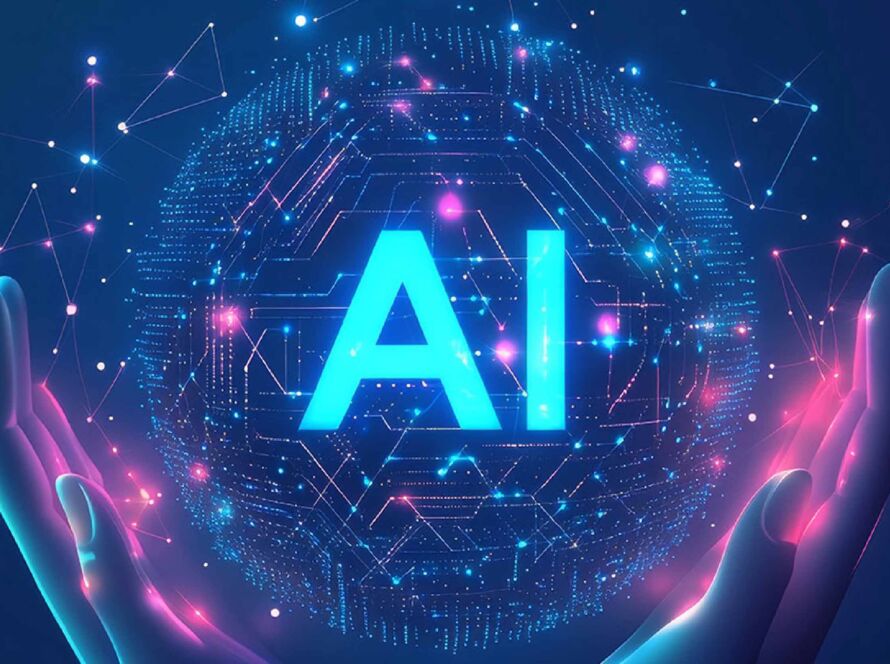Ever since “reasoning” became available within AI, a new paradigm has emerged. Agents can now break down complex tasks into smaller ones and execute them with a focus on achieving a larger goal. This evolution raises a key question: How does AI-driven reasoning impact UI/UX and the way we interact with computers?
We at LUMIQ call this UUAI – Unified User and AI Interface where AI and users interact seamlessly and with fluidity leveraging what humans are best at voice, video and natural language.
Notice how the contextual information segregated by action, information and log can be dynamically organized.
To explore this, let’s look at where we were before the era of Gen AI and reasoning.
Where We Were Before Gen AI (and Reasoning) – AI infused applications
When AI/ML first appeared, it mostly enriched existing applications with insights and recommendations. However, the infinite possibilities of AI were often crammed into static UIs originally designed for fixed workflows.
In enterprise settings, the user → computer interaction typically looked like:
Human → Codified Instructions & Data ( Apps) -> Decision aided by AI/ML Insights -> Instructions/Tasks → Computer
Organizations mapped business processes into screens, capturing data and feeding it into AI/ML models for decision support. From a user interaction standpoint, the emphasis was on making UIs intuitive for data entry and basic decision-making. The computer’s role was largely task execution—limited by predefined workflows and form-based interfaces.
What Is a Humanized UI?
A truly humanized UI uses natural language—audio, video, or text—to drive interaction. This shift opens the door for AI to move beyond mere task execution.
The agentic framework addresses this transformation:
- A human defines a goal.
- The AI agent uses reasoning to break down that goal into smaller tasks.
- The agent then executes those tasks, updating its plan as needed.
In this model, the UI evolves from data entry to review and guidance. The business logic becomes more fluid, derived from human instructions rather than rigid forms.
The Future of UI is UUAI- AI Native & Humanized
Looking ahead, UI will be dynamic—generated on the fly by AI, based on the latest information. There are three key requirements:
- Human Interventions
- In scenarios where the AI cannot decide, a minimal UI should surface the exact context, enabling a human to step in. These interventions also serve as feedback loops to improve the AI over time. A simple text or voice interface can be sufficient; no excessive design required.
- Audit & Monitoring
- As AI agents take on more responsibilities, an operational dashboard or control centre becomes essential for real-time oversight. Think of it like a flight control for satellite launches, showing everything from small tasks to overall system health.
- Detailed Logs
- For compliance and debugging, each step an agent takes needs to be traceable—storing actions, decisions, and contextual data. This is critical in regulated industries like finance or healthcare.
We at LUMIQ call this AI Native and Humanized – we call it UUAI – Unified User and AI Interface.
Much of the UI we know today—complex forms and dense screens—will fade as AI agents handle tasks and only call on humans when necessary. Dynamic, minimalistic interfaces will present information top-down, focusing on interventions, oversight, and compliance. And because conversational AI is already robust, many interactions may shift to voice or video rather than traditional screens. The paradigm of “reasoning” requires us to move beyond from existing User Interface (UI) of today to UUAT – Unified User and AI Interface.
The question isn’t if this shift will happen, but when. Evidence suggests it’s already underway, with enterprises experimenting in various domains. As AI’s reasoning capabilities keep improving, so will the way we design and experience UIs.
If you already have agents or are building ones – we can help you reimagine the AI workforce and interactions with them.




